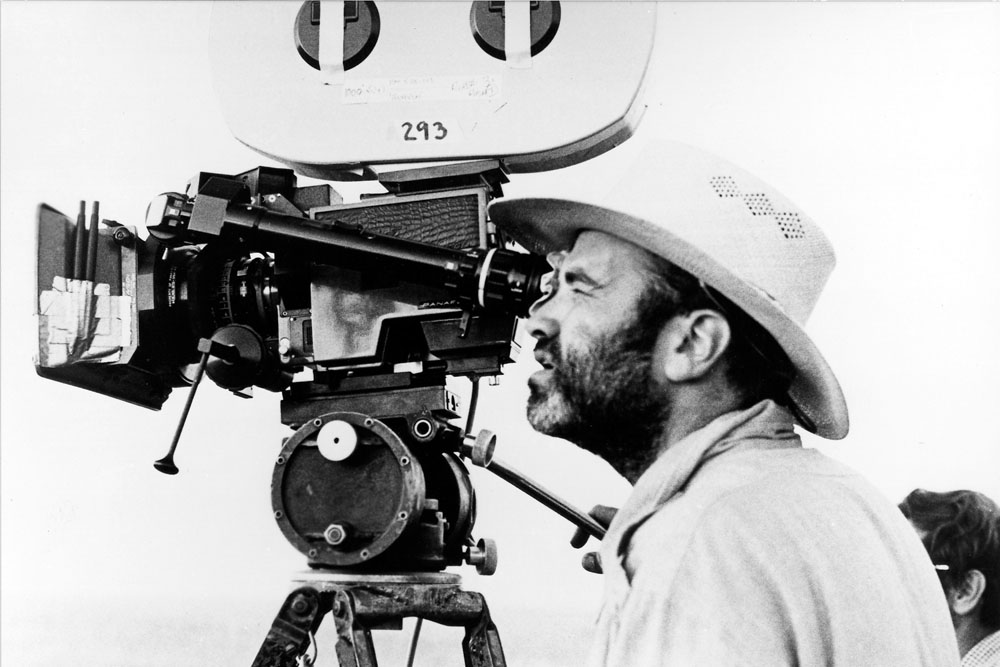Terrence Malick: An Arab American's Contribution to the Entertainment Industry:

By: María Teresa Fidalgo-Azize / Arab America Contributing Writer
“The nuns taught us there were two ways through life- the way of nature and the way of grace. You had to choose which one you’ll follow”
Terrence Malick, The Tree of Life
In today’s highly politicized identity discussions around media, representation, and visibility within the arena of the Western entertainment industry valorized as the official and universal vessel of meaning-making, it is refreshing how unconcerned prolific filmmaker Terrence Malick (of Lebanese and Assyrian heritage through his father) is of the politics of identity markers.
The calls for re-imagining Arab American representation in media are warranted after decades of fetishizing, otherizing, and villainizing[1]. Recent films and TV shows such as Ramy, Mr. Robot, and May in the Summersubvert the Arab American image as foreign and threatening to the American nation myth building with humanizing and three-dimensional portrayals- a grounding into the thread of America as a multi-cultural country.
Applauding and admiring these recent contributions to cinema and TV history, which directly respond to the debates of representation, the enigmatic figure of Terrence Malick seizes my attention through the lenses of a crowded tunnel vision. Rejecting expressions of affirmation and explanations of his often-misunderstood work and inner life, Terrence Malick’s work is revolutionary not solely on the grounds of the moving image; as a man of Arab descent- he does not separate humanity into categories but envisions it in unison, whether in harmony or catastrophe.
Who is Terrence Malick?

Nostalgia is a powerful feeling. It can drown out anything- Terrence Malick
Terrence Malick is renowned for his strong hostility to public life: there is a self-dignifying stance to his solitude when contrasted to the star entertainment system. Of the recollection of facts most known about him, the list goes: raised in Oklahoma and Texas; mother is Irish Catholic; father of Middle Eastern heritage; attended Harvard for his BA; dropped out of his doctoral program at Oxford, where he studied Heidegger and took a 20-year hiatus from filmmaking after winning Best Director at Cannes Film Festival for his film Days of Heaven.
His almost four-decade filmography includes Badlands, Days of Heaven, The Thin Red Line, The Tree of Life, Knights of Cups, and A Hidden Life. Instead of writing an article on his compendium of achievements and reprocessing already voiced descriptions of his often labeled “philosophical” work characterized by natural lighting, first-person voice-overs, non-linear narrative structures, and omnipresent camera movement (handheld), I have chosen to briefly touch upon one of Mallick’s most “accessible” works: The Thin Red Line, 1998 American epic World War II film illustrating a fictionalized version of the Battle of Mount Austen.
The Thin Red Line

First Sgt. Edward Welsh: If I never met you in this life, let me feel the lack. A glance from your eyes and my life will be yours.
The Thin Red Line is an adaptation of the eponymous James Jones novel starting with Sean Penn, John Travolta, Woody Harrelson, Jim Caviezel, and Adrien Brody set in the Battle of Mount Austen on the island of Guadalcanal. Contrary to most war movies that ground the film’s plot through the hero’s journey with a leading protagonist, The Thin Red Line purposely positions the audience in a state of disorientation both in the images of idyllic nature and its transformation into the ugliness of war.
There is no main protagonist in the film and hope is impossible to cling to as seen in the absence of overt patriotism and brotherhood. The notion that within this theater of war, there is a battle of good versus evil, or there is a definitive entity to root for is omitted in The Thin Red Line. When the American troops defeat the Japanese, there is no climatic moment of glory. Both the captives and the captors stand alongside themselves as losers of grace.
Terrence Malick’s visuals are characterized as meditative. In The Thin Red Line, Malick creates in unison with the sound department and score (Hans Zimmer) a striking template of the borderlands of nature’s essence be it dirt in the ground or an invocation for grace.
Conclusion
Amidst a climate fixated on us versus them differences, an identity as a marker of distinction against a sea of sameness, Terrence Malick’s films feel like an antidote to a cinematic worldview limited to only wishing to see a pristine reflection of itself. Perhaps one of the greatest accomplishments of Malick’s career beyond his oeuvre is inspiring other Arab-American filmmakers to see themselves beyond identity categories.
Sources:
Blume, Mary. “Terrence Malick Is Back, with an Epic.” The New York Times, The New York Times, 13 Sept. 1997, www.nytimes.com/1997/09/13/style/IHT-terrence-malick-is-back-with-an-epic.html.
DeLay, Steven, editor. Life Above the Clouds: The Philosophy of Terrence Malick . State University of the New York Press , 2023.
Flight, Thomas, creator. How Terrence Malick Style Developed. Youtube, MUBI, 15 Nov. 2018, https://www.youtube.com/watch?v=FIsltz3Khl4.
Mahdi, Waleed F. Arab Americans In Film: From Hollywood and Egyptian Stereotypes to Self-Representation. Syracuse University Press, 2020.
Malick, Terrence, director. The Thin Red Line. Fox 2000 Pictures and Phoenix Pictures, 1998.
Mikulek, Sven. “Terrence Malick’s ‘The Thin Red Line’: The Traumatic and Poetic Journey into the Heart of Man • Cinephilia & Beyond.” Cinephilia & Beyond, 8 Feb. 2021, cinephiliabeyond.org/terrence-malicks-thin-red-line-traumatic-poetic-journey-heart-man/.
O’Sullivan, Michael. “‘Red Line’ : Above and Beyond .” Washington Post, 8 Jan. 1999, www.washingtonpost.com/wp-srv/style/movies/reviews/thinredlineosullivan.htm.
Sterritt, David. “The Thin Red Line: This Side of Paradise.” The Criterion Channel, 26 Sept. 2010, www.criterion.com/current/posts/1603-the-thin-red-line-this-side-of-paradise.
[1] Waleed F. Mahdi’s Arab Americans in Film: From Hollywood and Egyptian Stereotypes to Self-Representation provides a comprehensive historical overview of Arab American representation in Western media and the Egyptian entertainment complex. The discussions of Western media’s depiction of Arab-Americans and in general Arabness al’huwwiya al’arrabiya include the beginning of the cinematic medium as seen in The Dance of the Seven Veils (1893) which purported an Orientalist hegemonic view, to 9/11 racialized depiction of Arab-Americans as infiltrators and agents of terrorism as seen in the film The Siege (1998, Edward Zwick). The concepts of cultural citizenship, spatial morality, and nationalism and belonging are explored through the lenses of how they are set in binary opposition to structural forms of power.
Check out Arab America’s blog here!








